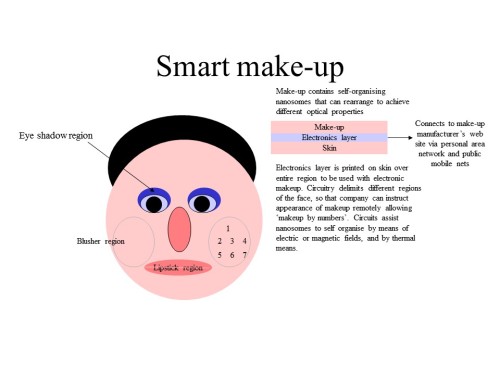For a long time, people have been moving from countryside into cities. The conventional futurist assumption is that this trend will continue, with many mega-cities, some with mega-buildings. I’ve consulted occasionally on future buildings and future cities from a technological angle, but I’ve never really challenged the assumption that urbanization will continue. It’s always good to challenge our assumptions occasionally, as things can change quite rapidly.
There are forces in both directions. Let’s list those that support urbanisation first.
People are gregarious. They enjoy being with other people. They enjoy eating out and having coffees with friends. They like to go shopping. They enjoy cinemas and theatre and art galleries and museums. They still have workplaces. Many people want to live close to these facilities, where public transport is available or driving times are relatively short. There are exceptions of course, but these still generally apply.
Even though many people can and do work from home sometimes, most of them still go to work, where they actually meet colleagues, and this provides much-valued social contact, and in spite of recent social trends, still provides opportunities to meet new friends and partners. Similarly, they can and do talk to friends via social media or video calls, but still enjoy getting together for real.
Increasing population produces extra pressure on the environment, and governments often try to minimize it by restricting building on green field land. Developers are strongly encouraged to build on brown field sites as far as possible.
Now the case against.
Truly Immersive Interaction
Talking on the phone, even to a tiny video image, is less emotionally rich than being there with someone. It’s fine for chats in between physical meetings of course, but the need for richer interaction still requires ‘being there’. Augmented reality will soon bring headsets that provide high quality 3D life-sized images of the person, and some virtual reality kit will even allow analogs of physical interaction via smart gloves or body suits, making social comms a bit better. Further down the road, active skin will enable direct interaction with the peripheral nervous system to produce exactly the same nerve signals as an actual hug or handshake or kiss, while active contact lenses will provide the same resolution as your retina wherever you gaze. The long term is therefore communication which has the other person effectively right there with you, fully 3D, fully rendered to the capability of your eyes, so you won’t be able to tell they aren’t. If you shake hands or hug or kiss, you’ll feel it just the same as if they were there too. You will still know they are not actually there, so it will never be quite as emotionally rich as if they were, but it can get pretty close. Close enough perhaps that it won’t really matter to most people most of the time that it’s virtual.
In the same long term, many AIs will have highly convincing personalities, some will even have genuine emotions and be fully conscious. I blogged recently on how that might happen if you don’t believe it’s possible:
None of the technology required for this is far away, and I believe a large IT company could produce conscious machines with almost human-level AI within a couple of years of starting the project. It won’t happen until they do, but when one starts trying seriously to do it, it really won’t be long. That means that as well as getting rich emotional interaction from other humans via networks, we’ll also get lots from AI, either in our homes, or on the cloud, and some will be in robots in our homes too.
This adds up to a strong reduction in the need to live in a city for social reasons.
Going to cinemas, theatre, shopping etc will also all benefit from this truly immersive interaction. As well as that, activities that already take place in the home, such as gaming will also advance greatly into more emotionally and sensory intensive experiences, along with much enhanced virtual tourism and virtual world tourism, virtual clubbing & pubbing, which barely even exist yet but could become major activities in the future.
Socially inclusive self-driving cars
Some people have very little social interaction because they can’t drive and don’t live close to public transport stops. In some rural areas, buses may only pass a stop once a week. Our primitive 20th century public transport systems thus unforgivably exclude a great many people from social inclusion, even though the technology needed to solve that has existed for many years. Leftist value systems that much prefer people who live in towns or close to frequent public transport over everyone else must take a lot of the blame for the current epidemic of loneliness. It is unreasonable to expect those value systems to be replaced by more humane and equitable ones any time soon, but thankfully self-driving cars will bypass politicians and bureaucrats and provide transport for everyone. The ‘little old lady’ who can’t walk half a mile to wait 20 minutes in freezing rain for an uncomfortable bus can instead just ask her AI to order a car and it will pick her up at her front door and take her to exactly where she wants to go, then do the same for her return home whenever she wants. Once private sector firms like Uber provide cheap self-driving cars, they will be quickly followed by other companies, and later by public transport providers. Redundant buses may finally become extinct, replaced by better socially inclusive transport, large fleets of self-driving or driverless vehicles. People will be able to live anywhere and still be involved in society. As attendance at social events improves, so they will become feasible even in small communities, so there will be less need to go into a town to find one. Even political involvement might increase. Loneliness will decline as social involvement increases, and we’ll see many other social problems decline too.
Distribution drones
We hear a lot about upcoming redundancy caused by AI, but far less about the upside. AI might mean someone is no longer needed in an office, but it also makes it easier to set up a company and run it, taking what used to be just a hobby and making it into a small business. Much of the everyday admin and logistics can be automated Many who would never describe themselves as entrepreneurs might soon be making things and selling them from home and this AI-enabled home commerce will bring in the craft society. One of the big problems is getting a product to the customer. Postal services and couriers are usually expensive and very likely to lose or damage items. Protecting objects from such damage may require much time and expense packing it. Even if objects are delivered, there may be potential fraud with no-payers. Instead of this antiquated inefficient and expensive system, drone delivery could collect an object and take it to a local customer with minimal hassle and expense. Block-chain enables smart contracts that can be created and managed by AI and can directly link delivery to payment, with fully verified interaction video if necessary. If one happens, the other happens. A customer might return a damaged object, but at least can’t keep it and deny receipt. Longer distance delivery can still use cheap drone pickup to take packages to local logistics centers in smart crates with fully block-chained g-force and location detectors that can prove exactly who damaged it and where. Drones could be of any size, and of course self-driving cars or pods can easily fill the role too if smaller autonomous drones are inappropriate.
Better 3D printing technology will help to accelerate the craft economy, making it easier to do crafts by upskilling people and filling in some of their skill gaps. Someone with visual creativity but low manual skill might benefit greatly from AI model creation and 3D printer manufacture, followed by further AI assistance in marketing, selling and distribution. 3D printing might also reduce the need to go to town to buy some things.
Less shopping in high street
This is already obvious. Online shopping will continue to become a more personalized and satisfying experience, smarter, with faster delivery and easier returns, while high street decline accelerates. Every new wave of technology makes online better, and high street stores seem unable or unwilling to compete, in spite of my wonderful ‘6s guide’:
Those that are more agile still suffer decline of shopper numbers as the big stores fail to attract them so even smart stores will find it harder to survive.
Improving agriculture
Farming technology has doubled the amount of food production per hectare in the last few decades. That may happen again by mid-century. Meanwhile, the trend is towards higher vegetable and lower meat consumption. Even with an increased population, less land will be needed to grow our food. As well as reducing the need to protect green belts, that will also allow some of our countryside to be put under better environmental stewardship programs, returning much of it to managed nature. What countryside we have will be healthier and prettier, and people will be drawn to it more.
Improving social engineering
Some objections to green-field building can be reduced by making better use of available land. Large numbers of new homes are needed and they will certainly need some green field to be used, but given the factors already listed above, a larger number of smaller communities might be better approach. Amazingly, in spite of decades of dating technology proving that people can be matched up easily using AI, there is still no obvious use of similar technology to establish new communities by blending together people who are likely to form effective communities. Surely it must be feasible to advertise a new community building program that wants certain kinds of people in it – even an Australian style points system might work sometimes. Unless sociologists have done nothing for the past decades, they must surely know what types of people work well together by now? If the right people live close to each other, social involvement will be high, loneliness low, health improved, care costs minimized, the need for longer distance travel reduced and environmental impact minimized. How hard can it be?
Improving building technology such as 3D printing and robotics will allow more rapid construction, so that when people are ready and willing to move, property suited to them can be available soon.
Lifestyle changes also mean that homes don’t need to be as big. A phone today does what used to need half a living room of technology and space. With wall-hung displays and augmented reality, decor can be partly virtual, and even a 450 sq ft apartment is fine as a starter place, half as big as was needed a few decades ago, and that could be 3D printed and kitted out in a few days.
Even demographic changes favor smaller communities. As wealth increases, people have smaller families, i.e fewer kids. That means fewer years doing the school run, so less travel, less need to be in a town. Smaller schools in smaller communities can still access specialist lessons via the net.
Increasing wealth also encourages and enables people to a higher quality of life. People who used to live in a crowded city street might prefer a more peaceful and spacious existence in a more rural setting and will increasingly be able to afford to move. Short term millennial frustrations with property prices won’t last, as typical 2.5% annual growth more than doubles wealth by 2050 (though automation and its assorted consequences will impact on the distribution of that wealth).
Off-grid technology
Whereas one of the main reasons to live in urban areas was easy access to telecomms, energy and water supply and sewerage infrastructure, all of these can now be achieved off-grid. Mobile networks provide even broadband access to networks. Solar or wind provide easy energy supply. Water can be harvested out of the air even in arid areas (http://www.dailymail.co.uk/sciencetech/article-5840997/The-solar-powered-humidity-harvester-suck-drinkable-water-AIR.html) and human and pet waste can be used as biomass for energy supply too, leaving fertilizer as residue.
There are also huge reasons that people won’t want to live in cities, and they will also cause deurbansisation.
The biggest by far in the problem of epidemics. As antibiotic resistance increases, disease will be a bigger problem. We may find good antibiotics alternatives but we may not. If not, then we may see some large cities where disease runs rampant and kills hundreds of thousands of people, perhaps even millions. Many scientists have listed pandemics among their top ten threats facing humanity. Obviously, being in a large city will incur a higher risk of becoming a victim, so once one or two incidents have occurred, many people will look for options to leave cities everywhere. Linked to this is bioterrorism, where the disease is deliberate, perhaps created in a garden shed by someone who learned the craft in one of today’s bio-hacking clubs. Disease might be aimed at a particular race, gender or lifestyle group or it may simply be designed to be as contagious and lethal as possible to everyone.
I’m still not saying we won’t have lots of people living in cities. I am saying that more people will feel less need to live in cities and will instead be able to find a small community where they can be happier in the countryside. Consequently, many will move out of cities, back to more rural living in smaller, friendlier communities that improving technology makes even more effective.
Urbanization will slow down, and may well go into reverse. We may reach peak city soon.




:no_upscale()/cdn1.vox-cdn.com/uploads/chorus_image/image/51990837/image001.0.gif)
:no_upscale()/cdn1.vox-cdn.com/uploads/chorus_asset/file/7589971/lexus_lit_2.gif)

















